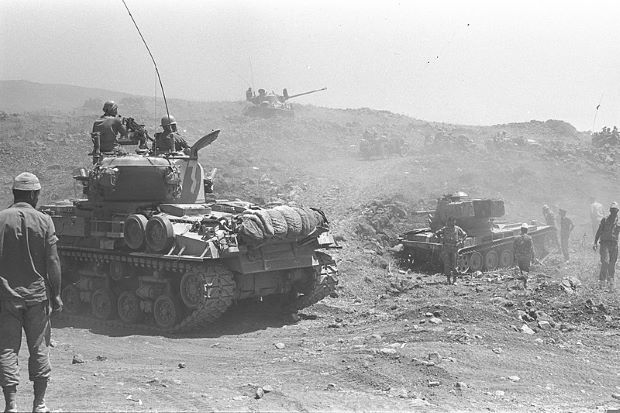June 10 in History
1967 – The Six-Day War ends: Israel and Syria agree to a ceasefire
The Six-Day War also known as the 1967 Arab–Israeli War or Third Arab–Israeli War, was fought between Israel and a coalition of Arab states (primarily Egypt, Syria, and Jordan) and ended on this day in 1967 after Egypt, Jordan and Syria, agreed to a ceasefire and signed it with Israel.
Military hostilities broke out amid poor relations between Israel and its Arab neighbours, who had been observing the 1949 Armistice Agreements signed at the end of the First Arab–Israeli War. Earlier, in 1956, regional tensions over the Straits of Tiran (giving access to Eilat, a port on the southeast tip of Israel) escalated in what became known as the Suez Crisis, when Israel invaded Egypt over the Egyptian closure of maritime passageways to Israeli shipping, ultimately resulting in the re-opening of the Straits of Tiran to Israel as well as the deployment of the United Nations Emergency Force (UNEF) along the Egypt–Israel border. In the months prior to the outbreak of the Six-Day War, tensions again became dangerously heightened: Israel reiterated its post-1956 position that another Egyptian closure of the Straits of Tiran to Israeli shipping would be a definite casus belli. In May 1967, Egyptian President Gamal Abdel Nasser announced that the Straits of Tiran would again be closed to Israeli vessels. He subsequently mobilized the Egyptian military into defensive lines along the border with Israel and ordered the immediate withdrawal of all UNEF personnel.
On June 5, 1967, as the UNEF was in the process of leaving the zone, Israel launched a series of pre-emptive airstrikes against Egyptian airfields and other facilities, launching its war effort. Egyptian forces were caught by surprise, and nearly all of Egypt’s military aerial assets were destroyed, giving Israel air supremacy. Simultaneously, the Israeli military launched a ground offensive into Egypt’s Sinai Peninsula as well as the Egyptian-occupied Gaza Strip. After some initial resistance, Nasser ordered an evacuation of the Sinai Peninsula; by the sixth day of the conflict, Israel had occupied the entire Sinai Peninsula. Jordan, which had entered into a defence pact with Egypt just a week before the war began, did not take on an all-out offensive role against Israel. However, the Jordanians did launch attacks against Israeli forces to slow Israel’s advance. On the fifth day, Syria joined the war by shelling Israeli positions in the north.
Egypt and Jordan agreed to a ceasefire on June 8, and Syria on June 9, and it was signed with Israel on June 11.
The Six-Day War resulted in more than 20,000 fatal Arab casualties, while Israel suffered fewer than 1000 fatal casualties. Alongside the combatant casualties were the deaths of 20 Israeli civilians killed in Arab forces air strikes on Jerusalem, 15 UN peacekeepers killed by Israeli strikes in the Sinai at the outset of the war, and 34 US personnel killed in the USS Liberty incident in which Israeli air forces struck a United States Navy technical research ship.
At the time of the cessation of hostilities, Israel had seized Syria’s Golan Heights, the Jordanian-annexed West Bank (including East Jerusalem), and Egypt’s Sinai Peninsula as well as the Egyptian-occupied Gaza Strip. The displacement of civilian populations as a result of the Six-Day War would have long-term consequences, as around 280000 to 325000 Palestinians and 100,000 Syrians fled or were expelled from the West Bank and the Golan Heights, respectively.[ Nasser resigned in shame following Israel’s victory but was later reinstated following a series of protests across Egypt. In the aftermath of the conflict, Egypt closed the Suez Canal until 1975, eventually leading to the 1970s energy crisis and 1973 oil crisis due to the impact on oil deliveries coming to Europe from the Middle East through the Suez Canal.
– Wikipedia
Photo Caption – Israeli tanks advancing on the Golan Heights. June 1967 -Wikipedia



Comments are closed, but trackbacks and pingbacks are open.